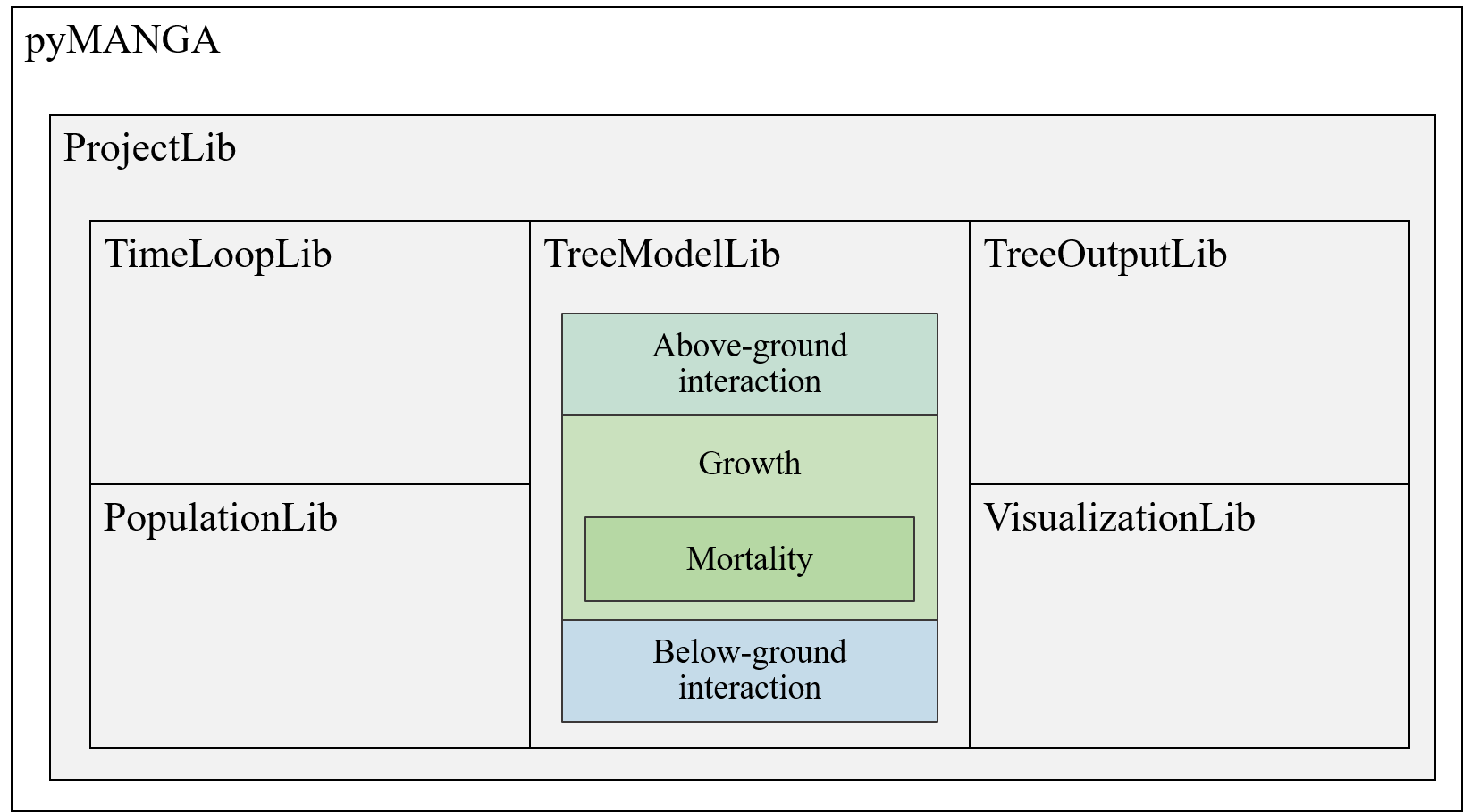Structure
On this page, we provide a brief overview on the structure of the pyMANGA platform. pyMANGA is composed of different libraries (Figure 1), each covering a part of the full forest (vegetation) growth model. This includes, for example, the distribution of individuals (‘PopulationLib’), the time step management (‘TimeLoopLib’) or the growth of individuals (‘TreeModelLib’). A library can contain several concepts to describe this specific aspect of the model in different ways. As pyMANGA follows object-oriented programming paradigms, each concept is defined by a class. Classes can be inherited to create new concepts. In some libraries an abstract parent class exists. This class is never initiated but serves as a template for all other concepts. This is, for example, the case in the libraries ‘TreeOutputLib’ and ‘TreeModelLib’. The documentation of each class can be found here.

Figure 1: Overview on pyMANGA structure. Each grey box represents a library.
The following sections briefly describe each library.
ProjectLib
This Library manages the interaction of all the other implemented libraries.
TimeLoopLib
The TimeLoopLib provides functionalities for model timestepping. Here, the scheduling of sub-models within one time step is defined.
PopulationLib
In the PopulationLib, the management of individuals within the model is controlled.
TreeModelLib
The TreeModelLib latter is the heart of pyMANGA as it describes vegetation growth and interaction between individuals and the environment. A TreeModel always consists of three interacting sub-libraries. Those libraries model the gathering of resources, above- and below-ground, as well as vegetation growth. The communication between those libraries is managed by interfaces.
AbovegroundCompetition
This sub-library characterizes the gathering of resources available above the ground. An above-ground resource relevant to pyMANGA is sunlight availability. A sub-model can, for example, describe how sunlight is available to individual trees if they are shwadowd by others.
BelowgroundCompetition
This sub-library characterizes the resource gathering below the ground. Since pyMANGA models growth via the presence of resources, these are also the focus of this submodel. The below-ground resource relevant to pyMANGA con for example represent the nutrient availability.
TreeGrowthAndDeath
In the third and last main sub-library of the TreeModelLib, the dynamic concept of tree (vegetation) growth and death is described.
TreeOutputLib
The TreeOutputLib controls the way pyMANGA generates output files from the simulation results.
VisualizationLib
The VisualizationLib defines an interface for the visualization of model results during runtime.

